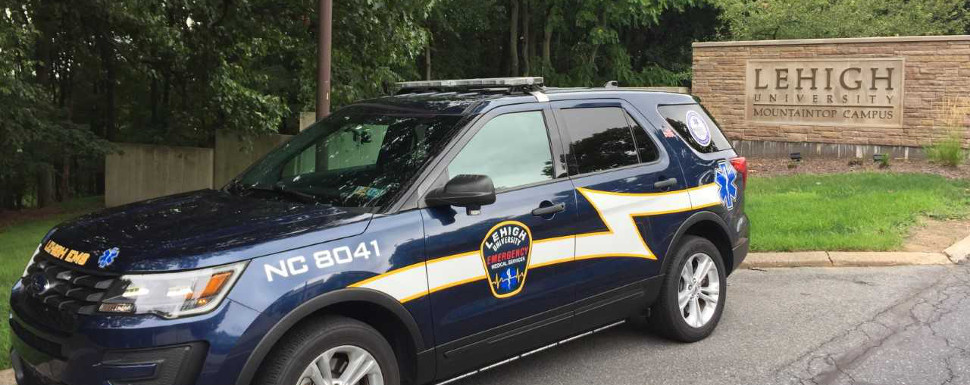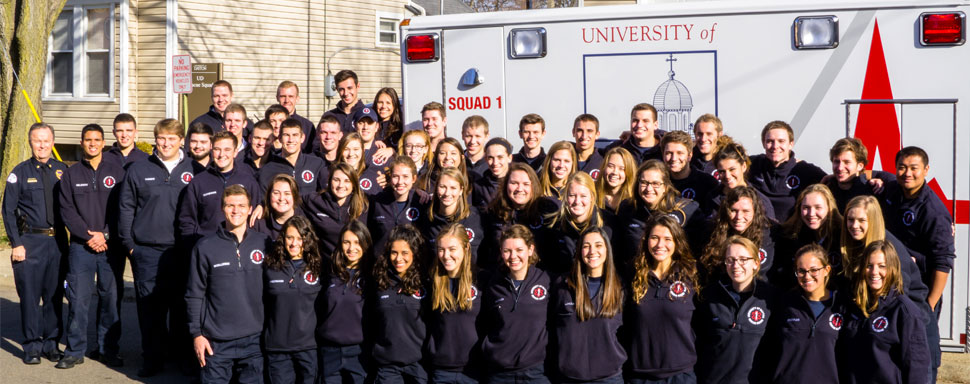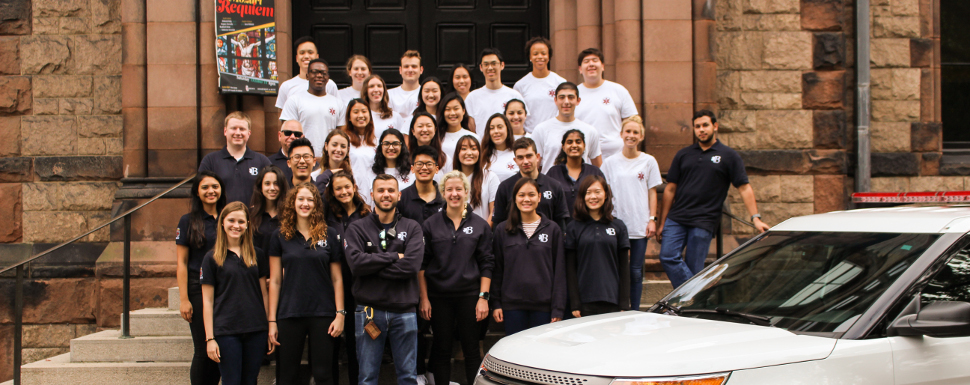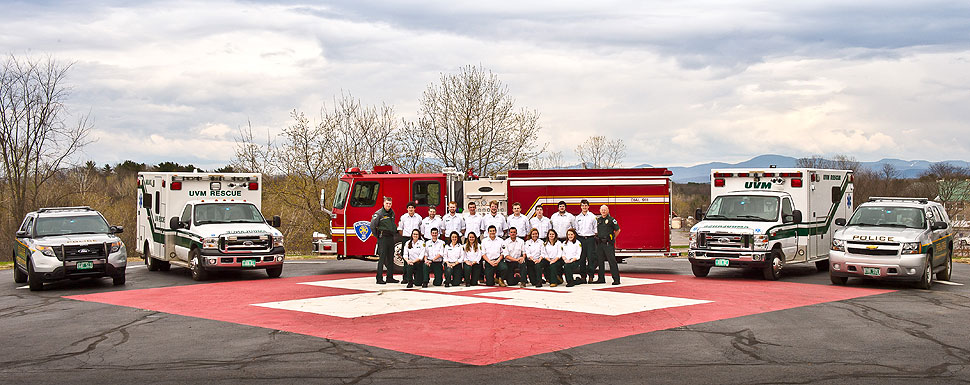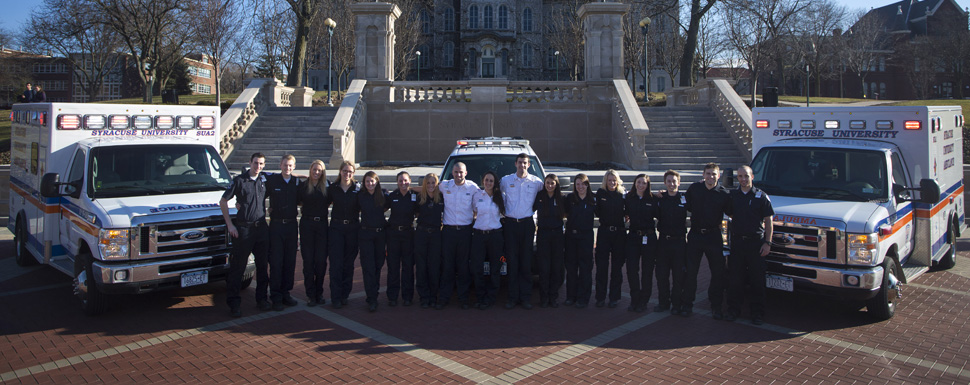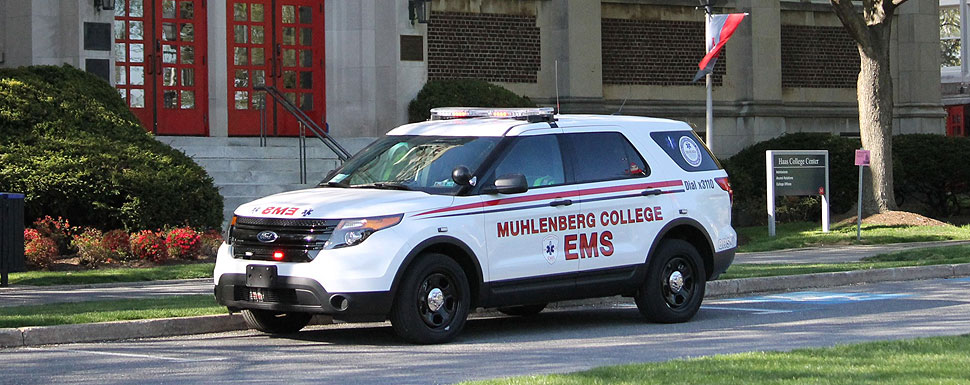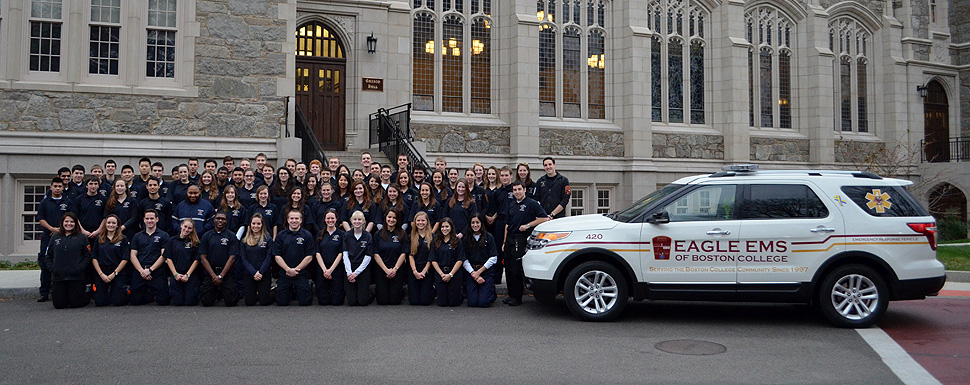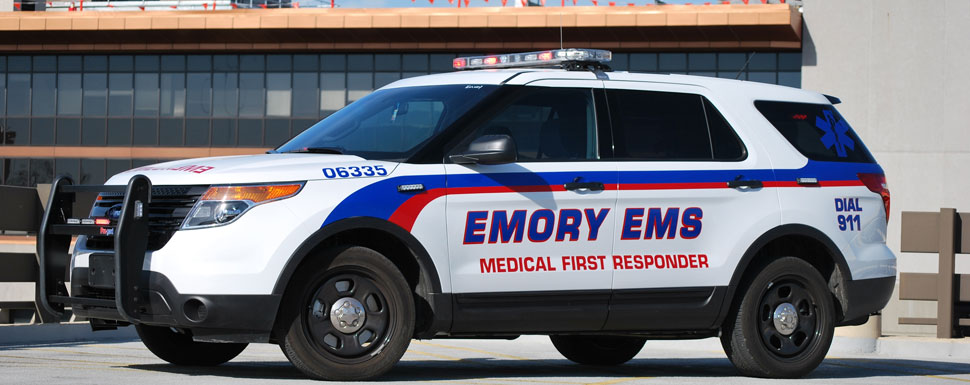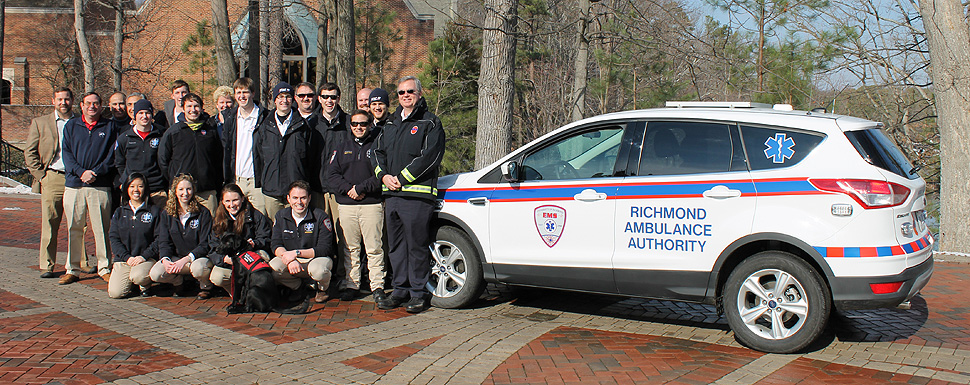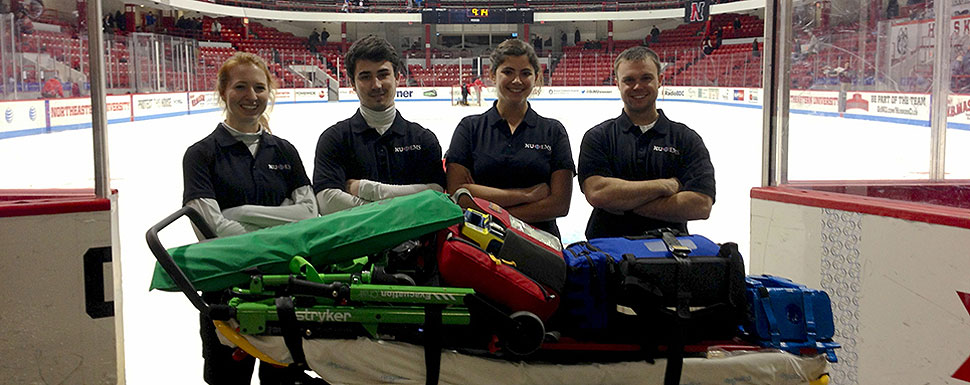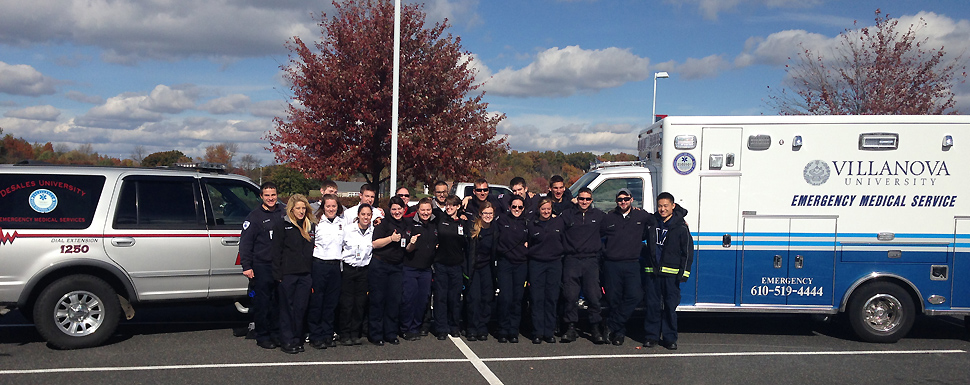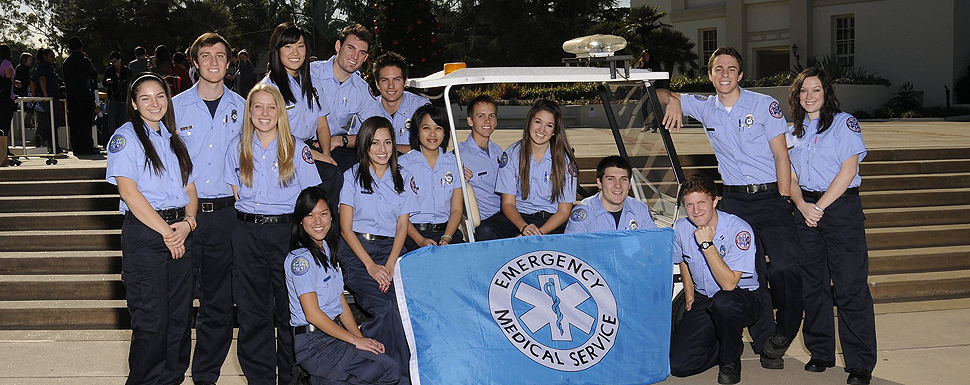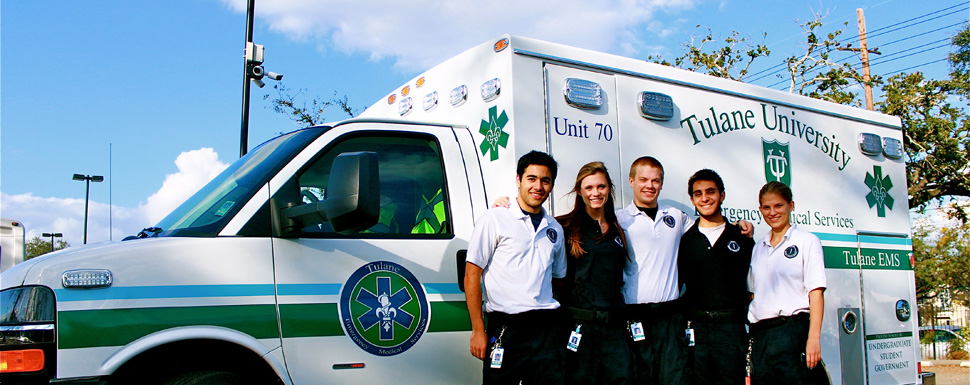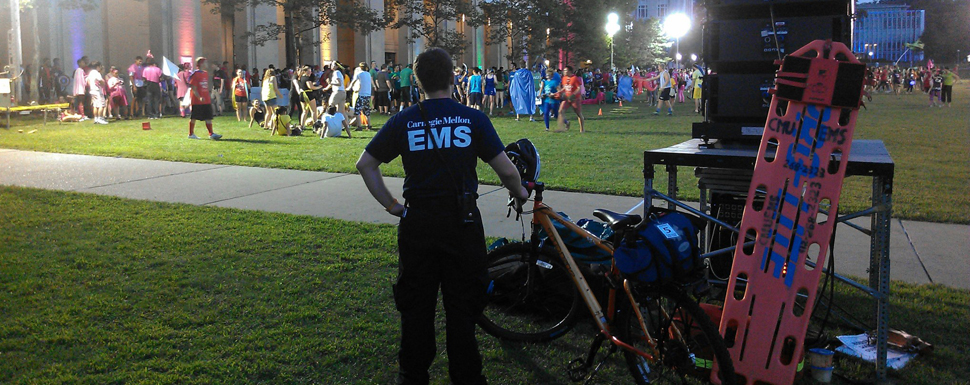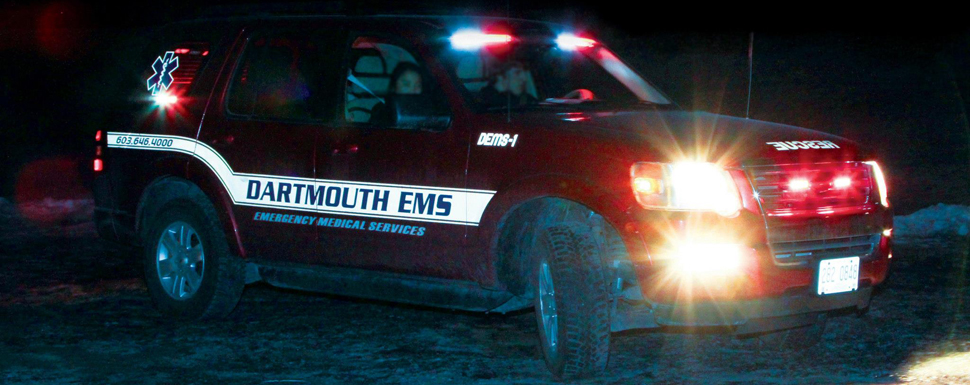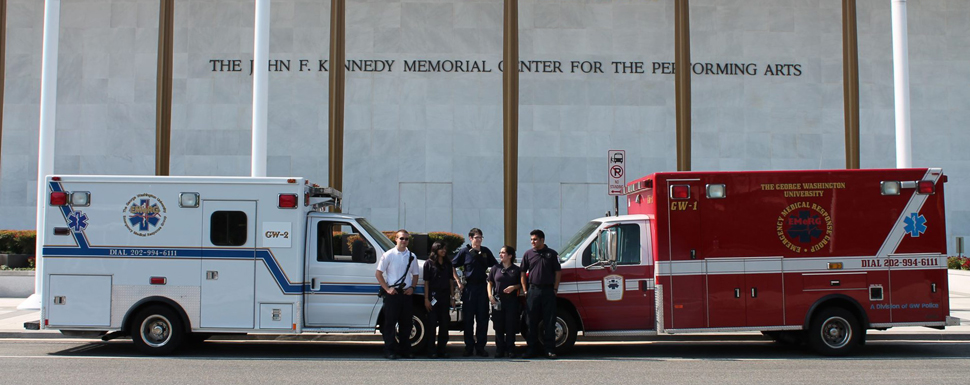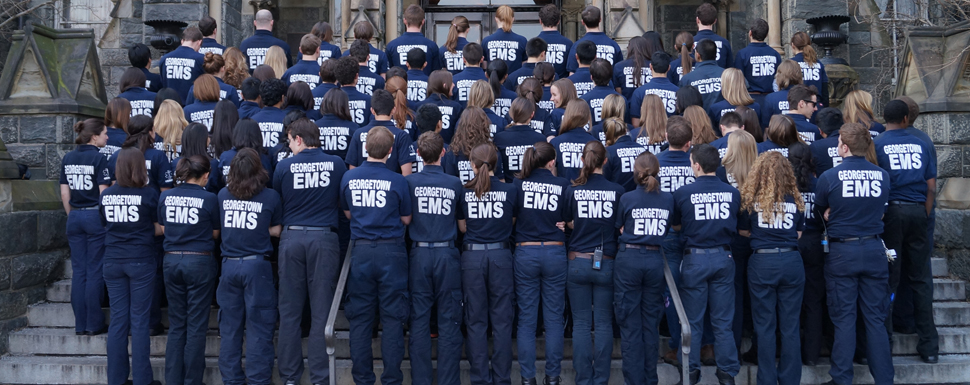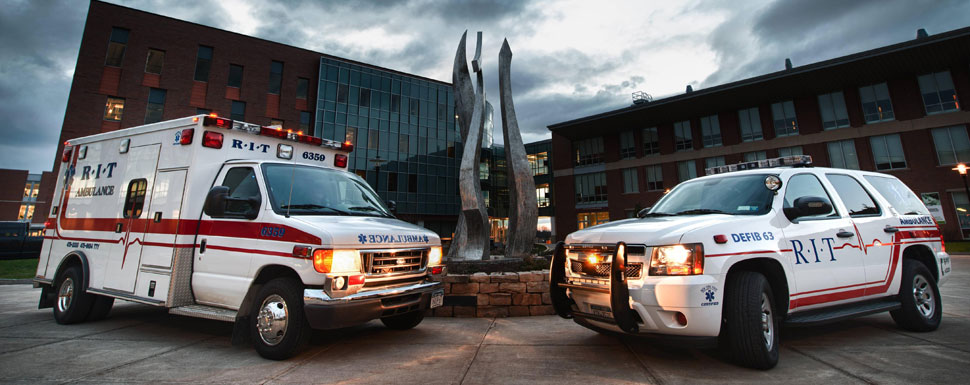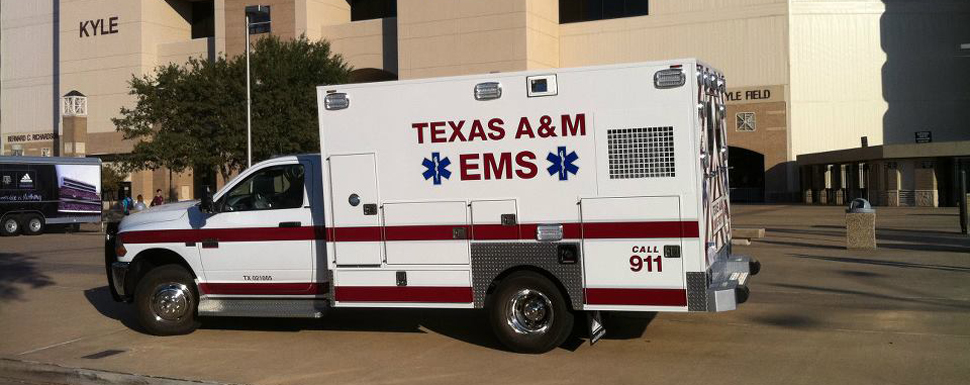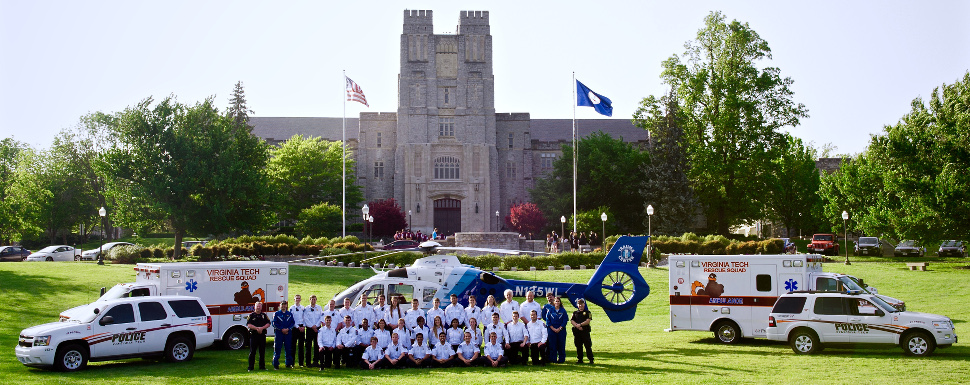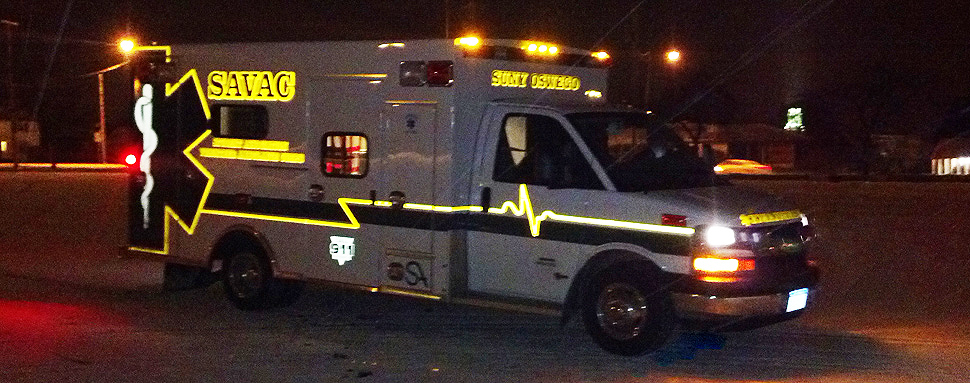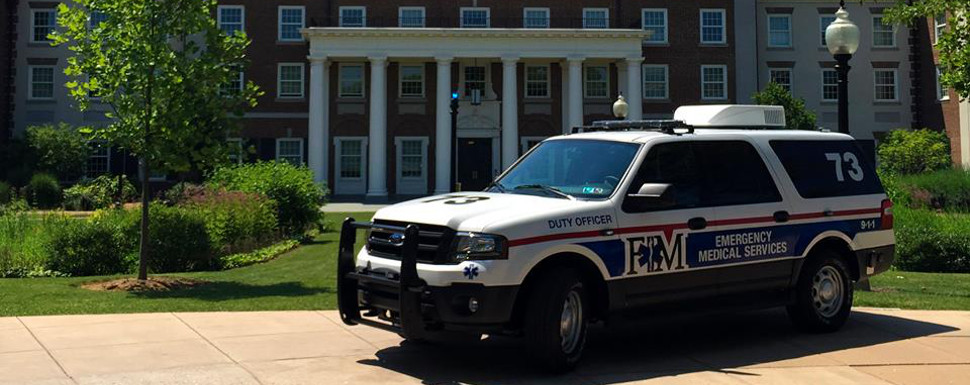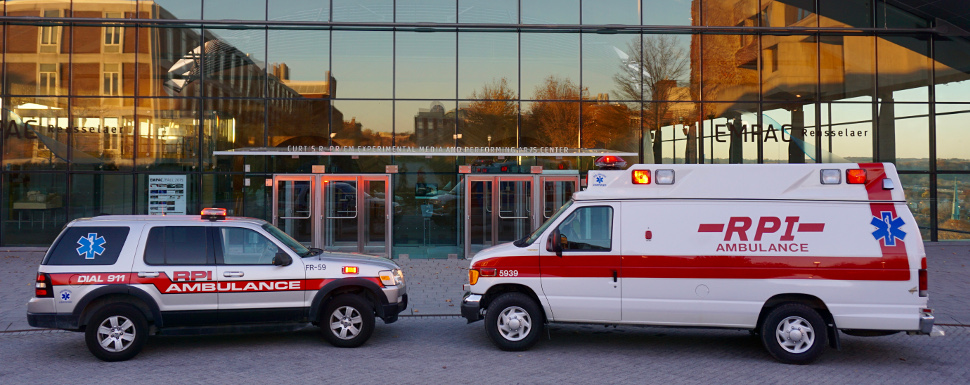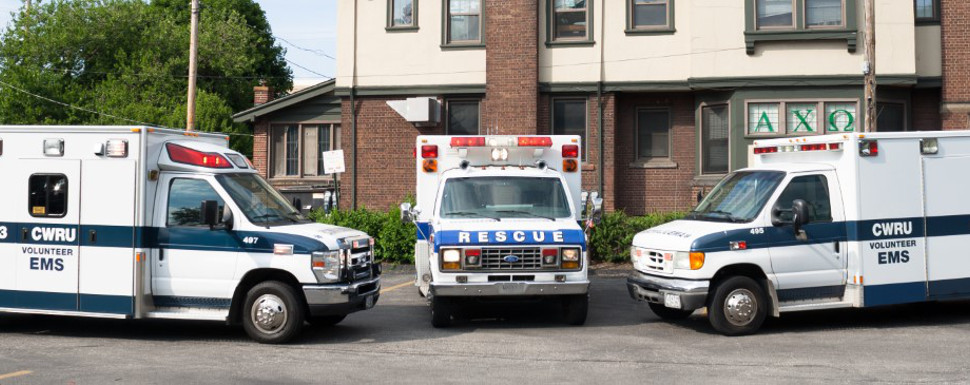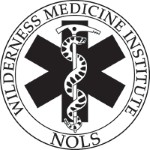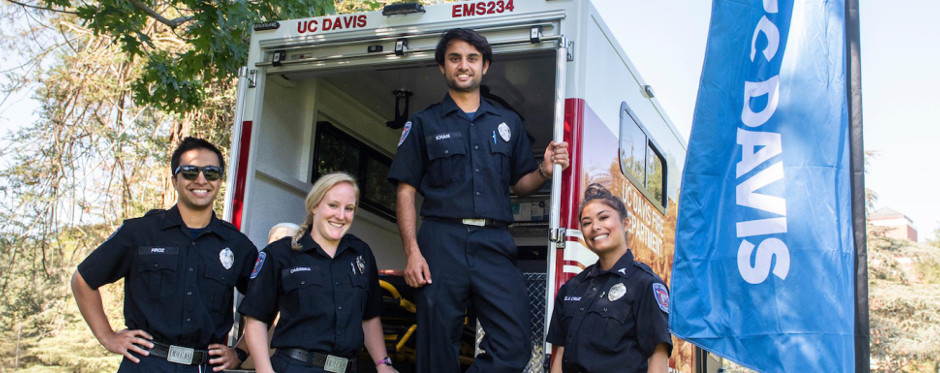
Student-Led Emergency Medical Response Service Now Operating on Campus
By Heidi Patton
San Francisco Foghorn

The University of San Francisco is now the first campus in the city with its own emergency medical service on site. A new student organization called USF EMR (Emergency Medical Response) formed at USF over the summer and began operating on the first weekend of the fall semester.
The EMR service operates on Friday and Saturday nights from 7 p.m. until 7 a.m. If Public Safety receives any medical emergency calls during that time, they radio EMR to the scene. So far, they have had calls dealing with alcohol related issues, lacerations and complaints of pain. "They are mostly all [similar] calls, nothing too intense. It's a lot of learning experience," EMR President senior Paul Gonzalez said. Two Emergency Medical Technicians (EMTs) are on duty at a time. They are trained to the EMT Basic level, and certified in CPR and First Aid. All EMTs are USF students, both undergraduate and graduate. There is also a field training officer (FTO) present during the shift, who is there to provide oversight and as- sistance to the EMTs.
EMTs are able to provide medical assistance for a variety of different medical issues, but they are not allowed to do anything invasive — no use of needles, no IV insertions, and no providing medications. The majority of what they do involves assessing the condition of the patient and determining if a hospital visit will be necessary. "We do this partly to help clear up the system for the city because if ambulances have to come all the time just for someone who sprained an ankle or something, that would take up a lot of resources and it would cost the student a lot," Public Relations official junior Marvin Huang said.
The EMR service is available to anyone on campus. The boundaries of USF EMR are Stanyan St. to the west, Masonic Ave. to the east, Loyola Village to the north and the backside of the law school to the south. They also have jurisdiction over the sidewalks that adjoin the buildings. Service can be extended under special circumstances to other university buildings. People are encouraged to call EMR, even if they are outside the range of service, in case the squad is available, or so the dispatcher can directly forward the call to San Francisco Emergency Medical Services (EMS).
"The system of working with Public Safety and working with the other EMS programs and companies in the city is becoming smoother than it was at the begin- ning. We are getting used to each other. It's becoming a good relationship," Administrative Assistant junior Erika Cole said.
So far the EMR service has averaged about one call per weekend. In some of the cases they have been able to provide enough assistance for the patient to avoid having to seek further medical care, including costly ambulance rides. Having been active for such a short time, many members of the USF community may not know about the EMR service, what services they can provide, or how to contact them.
"It's still a newer organization so I don't think we are being utilized to the extent that we should be yet because nobody knows we are here," FTO Kelsey Palladino said. "Once our name gets out and people get more familiarized with who we are and what we do, people will be more comfortable with calling us."
The students of USF EMR also recognize the concern in student EMTs treating other students who they may know or be friends with. According to Cole, on a campus as small as USF's, that's likely to happen, but she believes there are both pros and cons to the system. Cole thinks it might be comforting for a patient to see someone they know treating them, rather than a city EMT they've never seen before. On the other hand, it could be hard for the patient to view the EMT as a professional and not just as another student with whom they would rather not share medical information.
"Obviously, in our job we are not allowed to disclose information, and we all know that, but [the patients] don't know," Cole said. "When we are on duty we are in the job, and when we are out of uniform we are not the EMTs anymore — we are just the normal people. It's easy for us to keep it separated but it's hard for other people to keep it separated." "They are professionals. Once they are in uniform, they are not the same person in your philosophy class; they are trained EMTs," Palladino said.
Students may also worry about getting in trouble for calling with an alcohol or drug related medical emergency, but they shouldn't; Neither USF EMR nor Public Safety will reprimand students who call with medical concerns.
Beyond their weekend shifts on duty as EMTs, the students of USF EMR provide other services to the USF community, like instructing CPR classes on campus. Some faculty and students, such as those in the nursing program or the School of Education, are required to get certification in CPR. USF EMR offers these classes on campus for $65, which is under the average cost of around $80, according to Gonzalez. The classes provide the funding for the EMR ser- vice, which is needed for supplies, equipment and uniforms. All of the EMT work and CPR instruction is done entirely voluntarily.
"Our main goal, our mission, is to improve safety in our campus community, whether it's through actually handling emergencies or through raising awareness by teaching things like CPR, flu prevention, hand washing, or other topics," Huang said.
The formation of USF EMR, which began last fall, was initiated by Julie Orio, the associate vice provost of Student Life.

